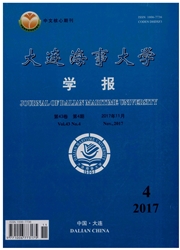

 中文摘要:
中文摘要:
为研究界面活性剂在溴化锂吸收机组中对吸收过程的强化机理,采用分子动力学方法模拟303 K时的水、质量分数为60%的溴化锂水溶液以及分别添加不同量的乙醇、正辛醇(1-octanol)、仲辛醇(2-octanol)、异辛醇(2-ethyl-1hexanol)的水或溴化锂水溶液的汽液界面,并且分别对其密度分布、微观结构进行研究,计算分别添加上述醇类的溴化锂水溶液的汽液界面张力,计算结果与实验值相符.模拟结果显示:正辛醇、仲辛醇、异辛醇分子吸附在汽液界面并在界面处呈优势取向,即疏水烃基指向气相,亲水羟基指向液相;醇分子的亲水基尽可能多地趋向水分子,二者在界面处以氢键相互作用;醇分子的添加量为某一特定范围时,醇分子的烃基链在界面处产生较大摆动.
 英文摘要:
英文摘要:
To investigate the strengthening mechanism of certain surfactant additives on the heat and mass transfer process in absorption, molecular dynamics simulations were carried out to study the longitudinal density profile and microstructure of the liquid-vapor interface of pure water, lithium bromide aqueous solutions with the mass fraction of 60%, and water or lithium bromide aqueous solutions with various concentrations of ethand, 1-octanol, 2-octanol and 2-ethy-1-hexanol at 303K, respectively. The surface tension of liquid-vapor interface of lithiurn bromide aqueous solutions with the above alcohols was calcu-lated respectively, and the calculated value conformed with the experimental data. The simulation results show that 1-octanol, 2-octanol or 2-ethy-1-hexanol molecules tend to absorb at the interface, showing their dominant orientation with the hydrophobic hydrocarbyl pointing into the vapor phase and with the hydrophilic hydroxyl pointing into the liquid phase, while the hydroxyl groups form a hydrogen bonding network with water which make the alcohol molecules seek more hydrophilic interactions with water molecules. The hydrocarbon chains can make large swing at the interface when the addition of alcohol molecules is in a certain range.
 同期刊论文项目
同期刊论文项目
 同项目期刊论文
同项目期刊论文
 期刊信息
期刊信息
